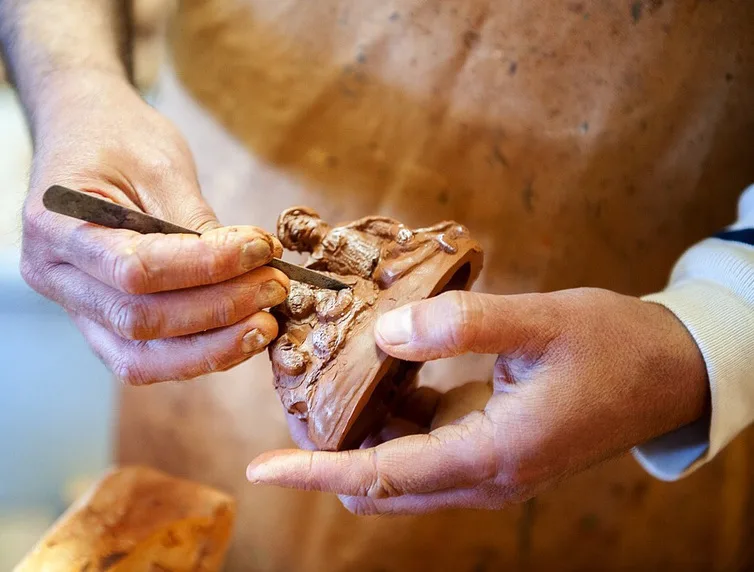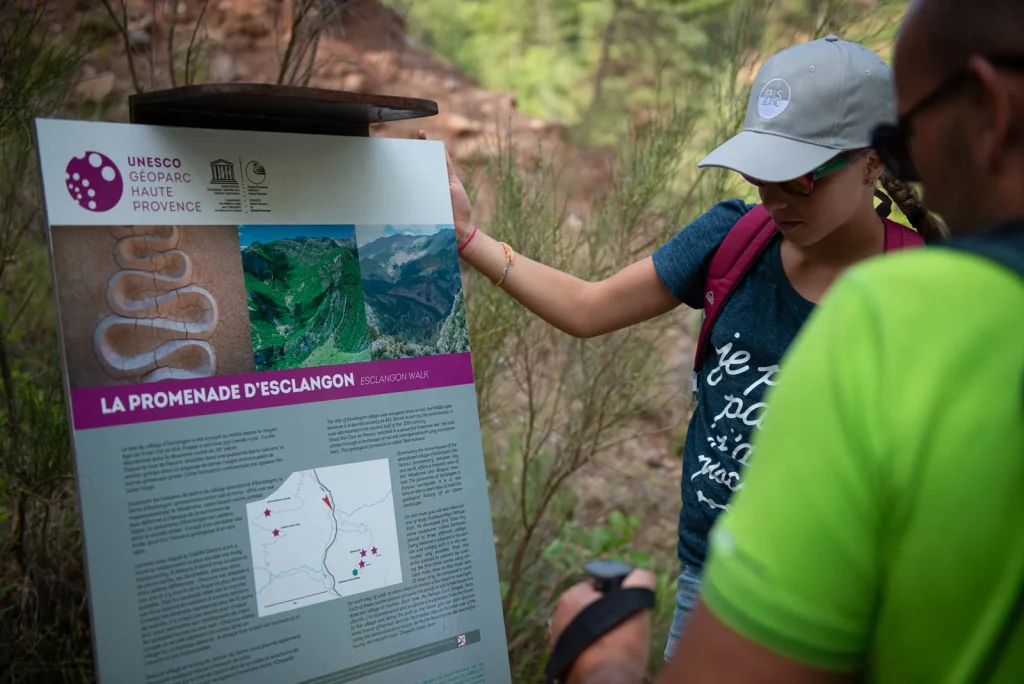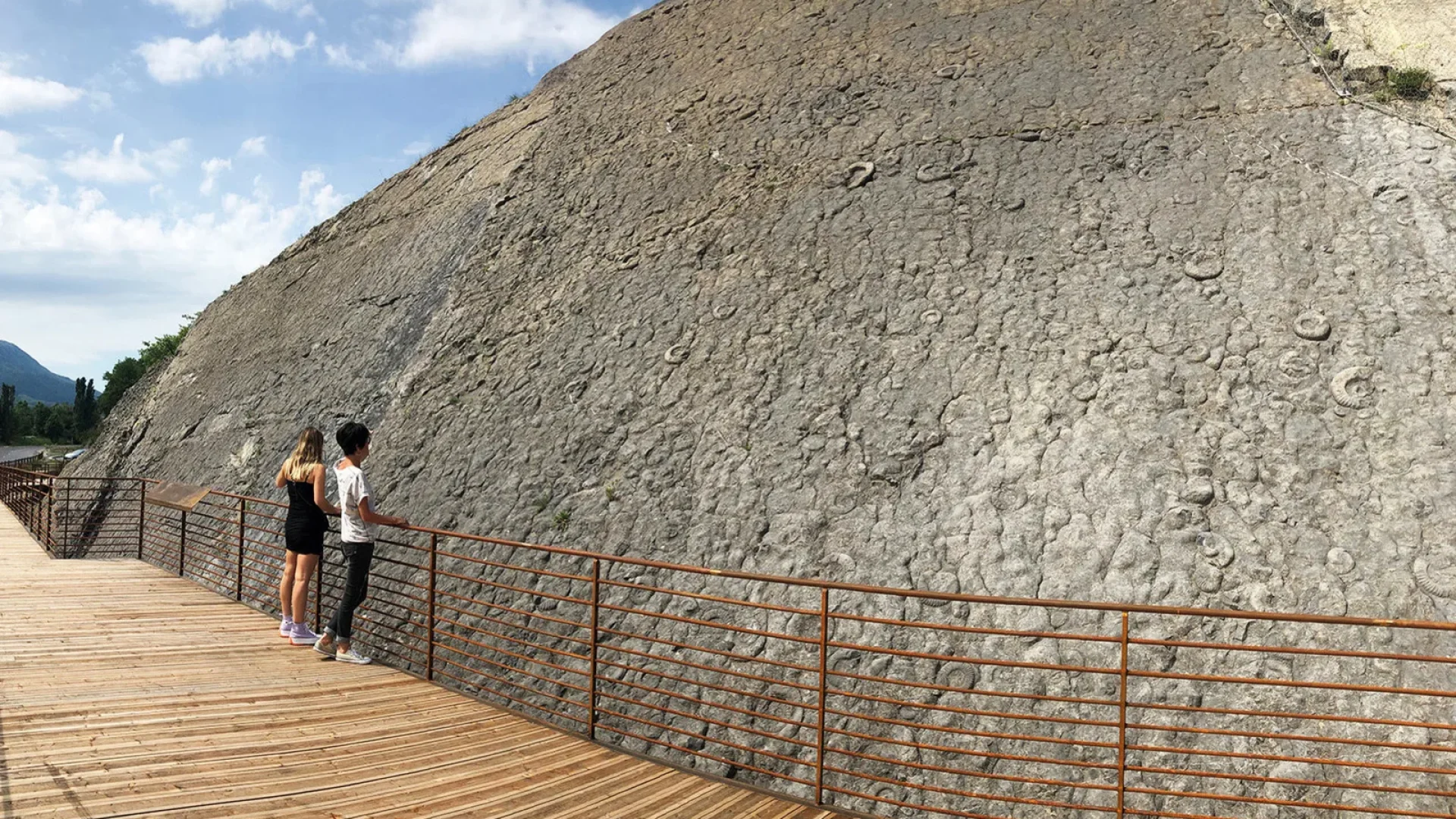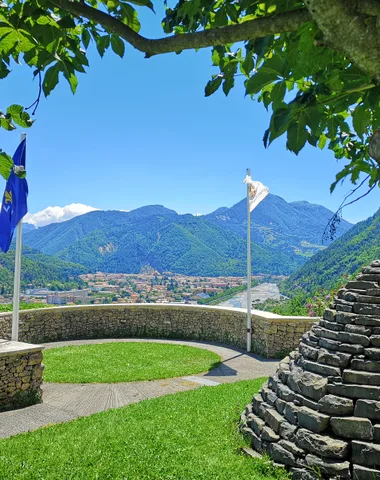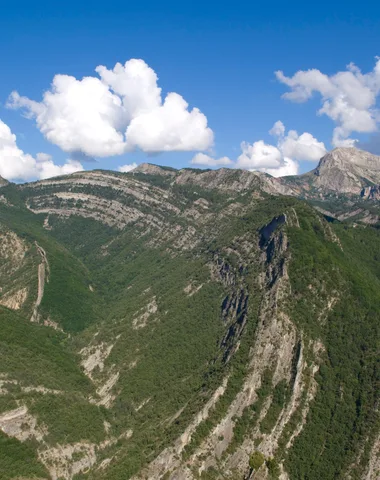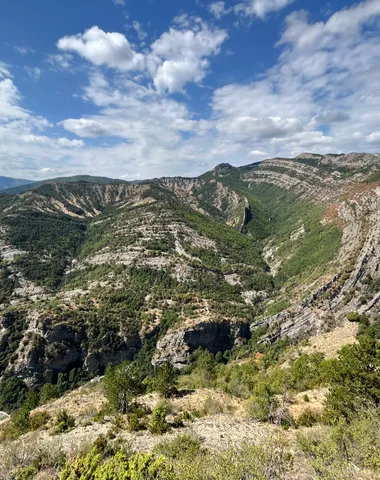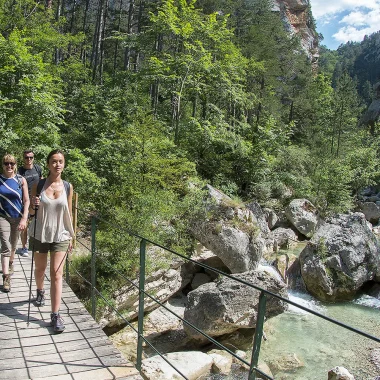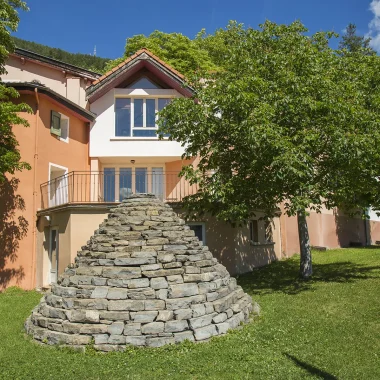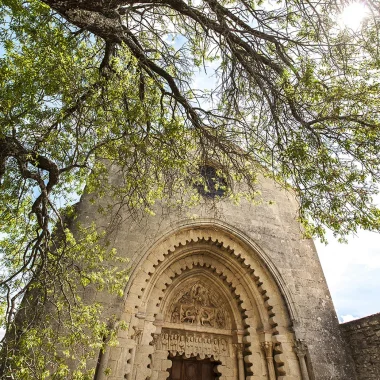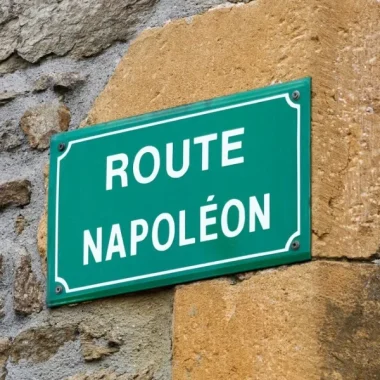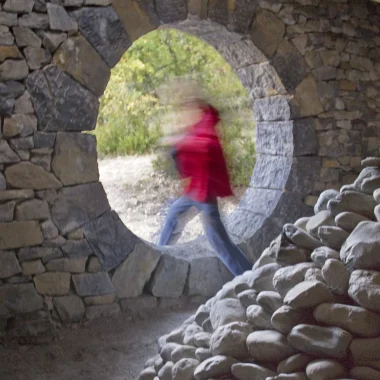With more than 1500 ammonite and nautilus fossils grouped together over an area of 320 m², the ammonite slab is undoubtedly the emblematic site of theUNESCO Geopark of Haute Provence.
The memory of the sea
A unique site in the world, starting from the Earth Memory Route.
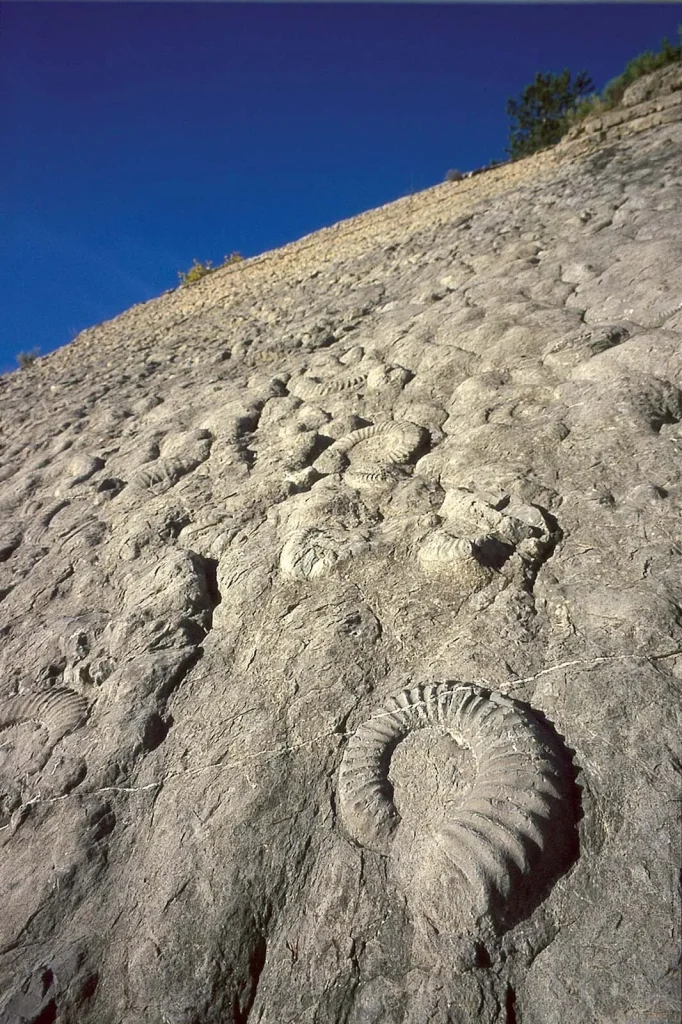
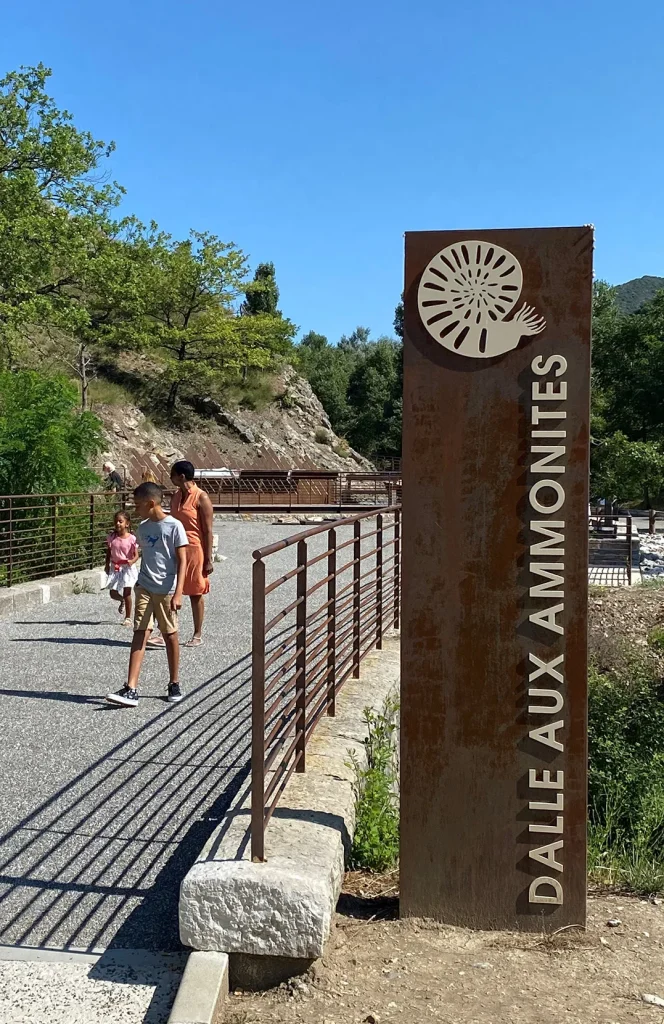
200 million years of Earth history
To understand the emergence of this seabed, we must return to the “Lias” (Lower Jurassic). At this time, our region is literally underwater, the marine space is deepening and expanding through ocean expansion. The sea is then teeming with life and marine animals are abundant.
The ammonite slab, as well as nearby sites, bear witness to the early stages of the development of the Alpine chain and what life was like in this ocean before the rise of the Alps. They allow us to understand the environment and the conditions that reigned at the time of these seabeds.
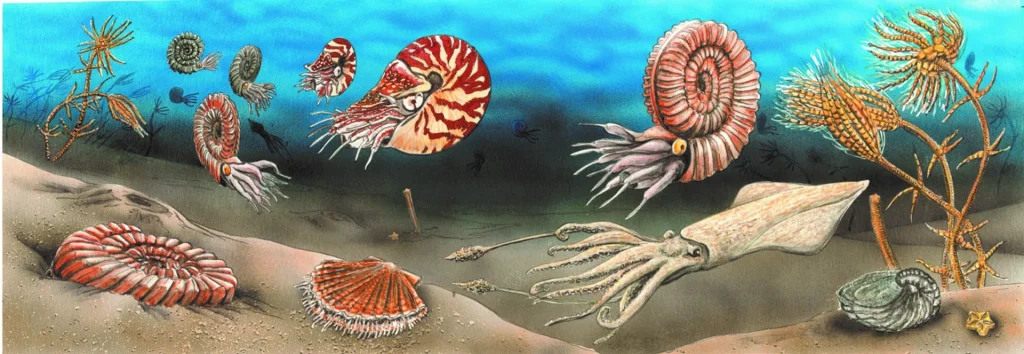
Today we can observe more than 1500 ammonites of all sizes on this “ammonite slab”, the largest are up to 70 cm in diameter!
The very good preservation of the shells once again allows us to bear witness to the marine activity of the time.
Their scientific name, coroniceras multicostatum, allows us to date the slab to around 200 million years old.
By retreating under the effect of the rising of the Alps, the sea has brought out other geological treasures such as the lunar desert of the Black Lands or these strange sea monsters that are the ichthyosaurs.
A unique site in the world…
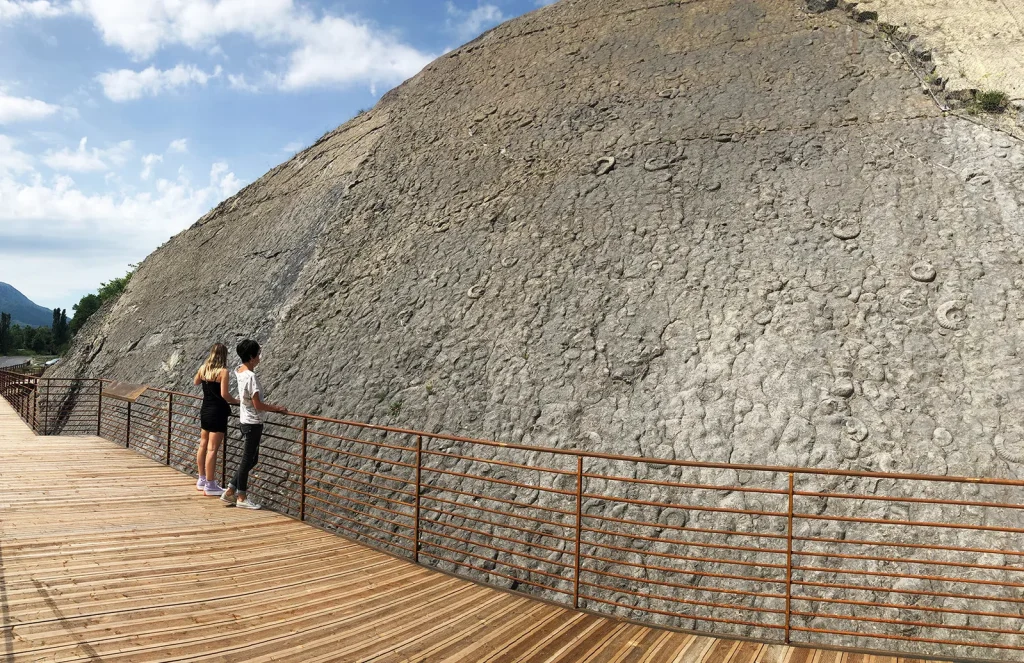
Partially unearthed for the first time in June 1941 during road works, it was only in 1979 that earthworks were carried out to clear the slab, which then revealed around 600 ammonites over 160 m². Until 1994 only 200 m² were visible. After this date, the Haute-Provence Geological Nature Reserve undertook to free up around 150 m² of additional space to reach a total surface area of 320 m².
… envied by the Japanese!
In 1992, the ammonite slab was cast for the city of Kamaishi in Japan (initially, the Japanese wanted to acquire the original!!!). The cast was made in the form of 30 fragments, which were shipped and assembled in Japan. This casting was then used for an international exhibition linked to the sea and geology, it is today visible at the Kamaishi Iron and Steel Museum.
The towns of Digne-les-Bains and Kamaishi have been twinned since 1995.
From the National Geological Nature Reserve of Haute-Provence to the UNESCO Geopark of Haute-Provence
Created 1984 the Haute-Provence National Geological Nature Reserve brings together 59 municipalities and extends over 200 hectares between the Alpes de Haute-Provence and the Var.
Its objectives are to protect and enhance geological sites, existing fossils and even remarkable landscapes.
This protection consists in particular of regulating practices on geological sites.
Thus, the extraction and collection of any fossil form is prohibited on 18 listed sites and a vast protection zone has been defined where the extraction of fossils is prohibited. The ammonite slab is one of the exceptional geological sites protected and highlighted by the National Geological Nature Reserve of Haute-Provence.
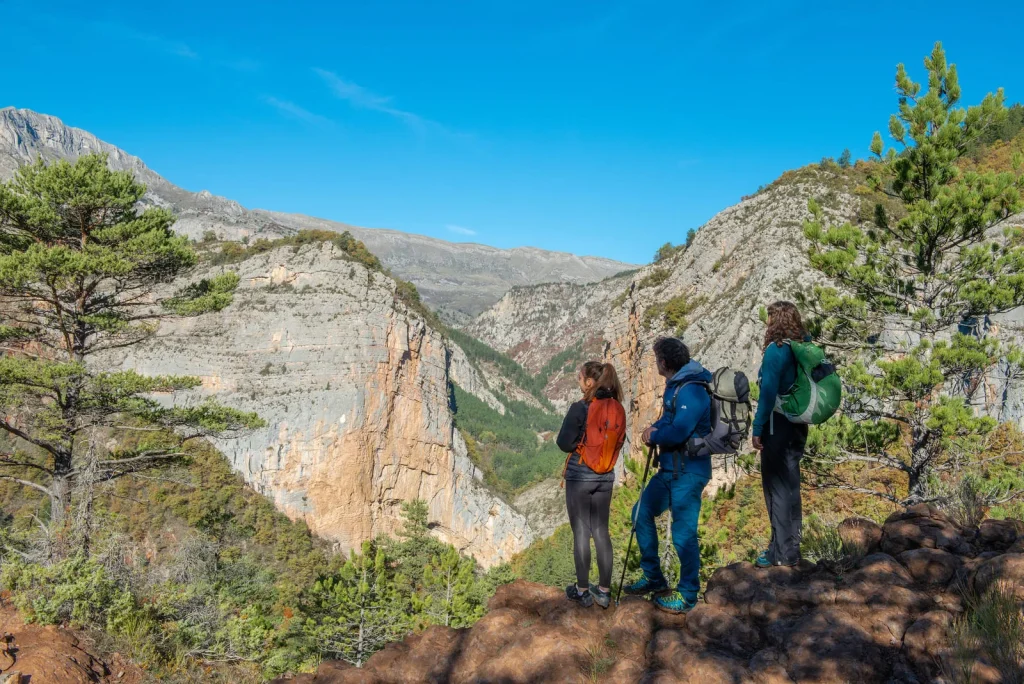
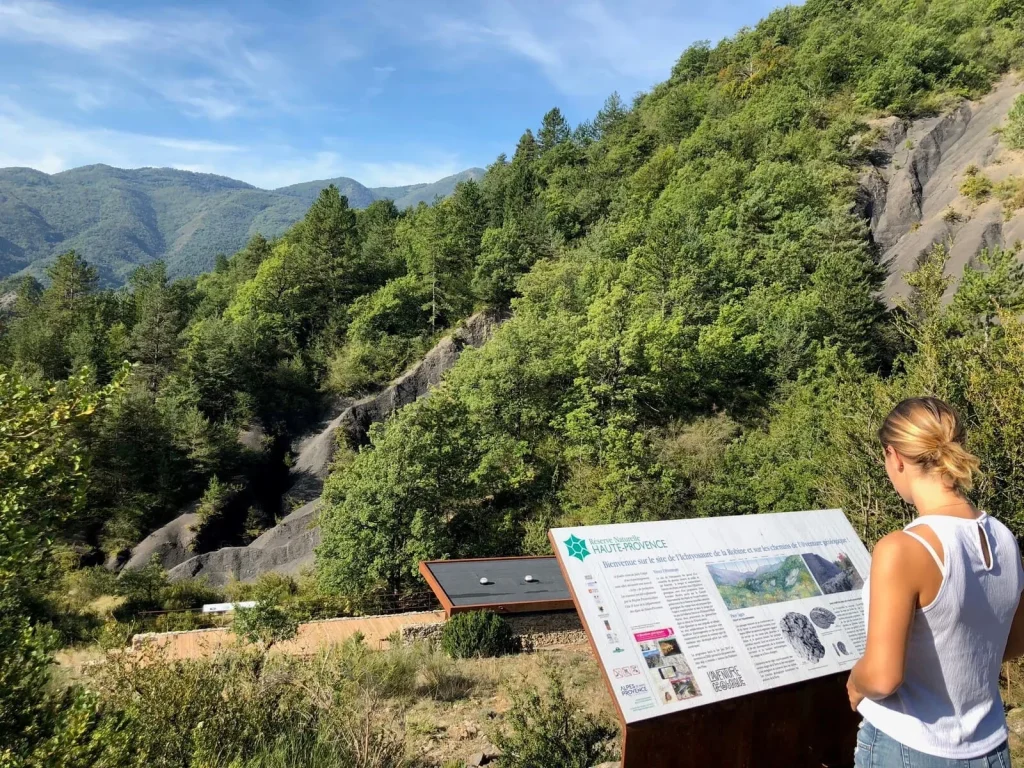

It was then in the year 2000 thatUNESCO Geopark of Haute-Provence see the day.
Coming from a common history with the National Geological Nature Reserve of Haute-Provence with which it shares a large part of its territory, and the objectives of protection and preservation of geological heritage, the UNESCO Geopark of Haute-Provence also works to promote and to animate all the heritage of its territory.
It brings together 67 municipalities in the department and covers an area of 1989 km2 since the extension of its territory granted in September 2019.
Around its exceptional geological heritage there are numerous sites promoting tangible and intangible heritage. All these heritages, brought together on the same territory, allowed UNESCO to establish “standards” and define a “UNESCO Geopark” label in 2000. It is therefore the UNESCO Geopark of Haute-Provence which served model to the 177 other Geoparks in the world.


